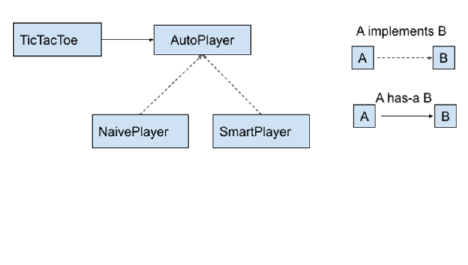Dependency Inversion Principle
Software Design
Abstract
The Dependency Inversion Principle forces us to depend on abstractions (in Java, it’s abstract interfaces) rather than on concrete implementations. When we apply DIP, our modules can make calls to other modules that they do not depend on (can compile without them). This gives our software more flexibility by making it easier to make software changes later. The students are presented with a model where classes depend on concrete implementations, followed by a model that utilizes dependency on abstractions. Students are challenged to invent the rule behind the DIP and identify the benefits of depending on abstractions. After completing this activity the students are expected to be able to explain how the dependency is inverted in the Dependency Inversion Principle (DIP), explain the benefits of applying DIP, and apply DIP to other software designs.
This activity was developed with NSF support through IUSE-1626765. You may request access to this activity via the following link: IntroCS-POGIL Activity Writing Program.
- Level: undergraduate
- Setting: computer classroom
- Activity type: Learning Cycle
- Discipline: Computer Science
- Course: Object-Oriented Software Design
- Keywords: dependency inversion principle (DIP)

Downloads
Published
How to Cite
Issue
Section
License
Copyright of this work and the permissions granted to users of the PAC are defined in the PAC Activity User License.

